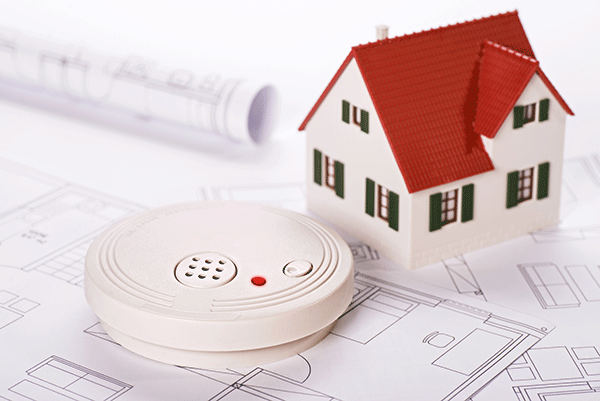It is that time of year again, Daylight Saving Time, a reminder to spring clocks forward an hour (for most of the country) and test smoke alarms.
By the Numbers
- From 2007 to 2011, smoke alarms only sounded in half of the home fires reported to U.S fire departments.
- In more than 37 percent of home fire deaths, there were no smoke alarms present in the home.
- Of homes where smoke alarms were present, 23 percent failed to sound.
- Of homes where smoke alarms were present but did not operate, 47 percent had missing or disconnected batteries.
- Three of every five home fire fatalities occurred in homes with no smoke alarm or no working smoke alarm.
The National Fire Protection Association (NFPA) has a wealth of resources available regarding guidance, FAQs and data. Help your customers understand how to care for their smoke alarms, ensure they are in good working order, options available and regular maintenance.
FAQs From the NFPA
Where is the manufacture date located?
The manufacture date should be visible on the back or side of the alarm.
When should smoke alarms be replaced?
Smoke alarms should be replaced when they fail to test properly or when they have reached 10 years from the date of manufacture.
How is a smoke alarm tested?
Most smoke alarms have a test button that can be pressed to ensure it is working properly. If the smoke alarm does not sound, replace the batteries and test again. If the unit fails to respond, replace the alarm right away.
The NFPA also recommends that everyone in the home knows the sound of the smoke alarm and how to respond.
How often should smoke alarm batteries be replaced?
The NFPA recommends testing smoke alarms every year, and Daylight Saving Time is the perfect annual reminder.
Are there units with longer life batteries (that don’t have to be changed every year)?
Yes, some smoke alarms have nonreplaceable (long-life) batteries designed to remain effective for up to 10 years. If the alarm chirps a low battery warning, replace the entire smoke alarm right away. There are also smoke alarms that can be hard-wired into a home.
How is a smoke alarm installed properly?
The NFPA provides a number of points to consider when installing smoke alarms. Read more here.
Do smoke alarms need to be cleaned?
The NFPA recommends following manufacturer directions for cleaning smoke alarms to ensure that they continue to work properly. If one cannot find the original instructions, check the internet, many are posted online as PDF documents.
Is there a specific standard from the NFPA regarding smoke alarms?
Read more on NFPA 92. NFPA 92 is the standard that establishes requirements for the “design, installation, and testing of smoke control systems used to mitigate the impact of smoke from fire.” The standard provides for new and retrofitted smoke containment and management systems and covers “basic physics of smoke movement in indoor spaces, methods of smoke control, supporting data and technology, building equipment and controls, design fundamentals, calculations, stairwell pressurization systems, component and acceptance testing, and documentation.”
The NFPA also provides a tip sheet on 9-volt battery safety. See here.
Read more:
OSHA Establishes New Confined Space Construction Standards
Catch Up On the New GHS Standard
Breathing Easier: OSHA Releases Final Rule Regarding Silica
Explosion-proof LED Lighting and Confined Spaces
Construction Site Fires: Reduce Your Risk
AFCIs Can Help Prevent Electrical House Fires
Does the Height of Carbon Monoxide Alarms Matter?
E-commerce offerings:
(Contact a Customer Service Representative for additional selections, options and solutions.)
Smoke Alarms and CO Detectors
Respiratory Protection
Fire Protection
Hazardous Location
Gas Detection Equipment
Call and let us help meet all of your supply needs (866-483-7289).
Did you know that any customer is eligible for online ordering? All you need to do is fill out this online form.
Key benefits include:
- Order anytime, 24/7, 365 days a year. If you can connect, you can place an order.
- Create order templates, aka “My Lists.” Reduce search time, click, order, done.
- Track purchase history and view your account information. You can review invoices any time, track purchase history, and print or download records.
